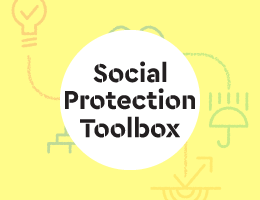In 2016 older persons made up 5.5 per cent of the total population of the Independent State of Samoa. By 2050, older persons will make up approximately 10 per cent of the population. In an effort to provide access to adequate income security for older persons, the Government of Samoa introduced the Samoa Senior Citizens Benefit Scheme (SCBS) in 1990. The SCBS complements the 1972 Samoa National Provident Fund (SNPF) scheme covering those in the formal sector. The Board of the Samoa National Provident Fund administers both schemes.
The Senior Citizens Benefit Scheme (SCBS) is a non-contributory pension programme available to all citizens and permanent residents of 65 years of age or above. Citizens receive a pension amounting up to WST 125, or USD 52, per month, which is approximately 20 per cent of the average national income. In 2014, 9,236 beneficiaries received the SCBS. In addition to the SCBS, it is mandatory for those in the formal sector and household workers to contribute to the SNPF scheme, which remains voluntary for those in the informal sector. Contributions to SNPF consist of 10 per cent of the employee’s gross salary, with contributions of 5 per cent from the employee and 5 per cent from the employer. Those eligible can begin claiming the pension at 55 years of age and are given the option to withdraw all or a portion of their contributions made to the SNPF. Currently the SCBS and the SNPF reaches approximately 71 per cent of those aged 60 years or more. Claimants of both pensions also receive a Pension Identification card providing access to free medication from the Ministry of Health and the ability to move freely between islands in Samoa.
Before implementation of the SCBS and SNPF only public sector employees had access to income security schemes. However, coverage became available to all Samoans with the passing of the National Provident Fund Amended Act 1990. While the schemes have encountered some challenges in meeting the needs of the informal sector and migrant workers, these investments nonetheless form an essential part of Samoa’s social protection floor and ensure that all older persons receive income security to a nationally defined minimum level.
Further Reading:
United Nations Economic and Social Commission for Asia and the Pacific (2012). Country Report: Samoa. Access from http://www.unescapsdd.org/files/documents/MIPAA_Country-Report-Samoa.pdf on August 20, 2013.
